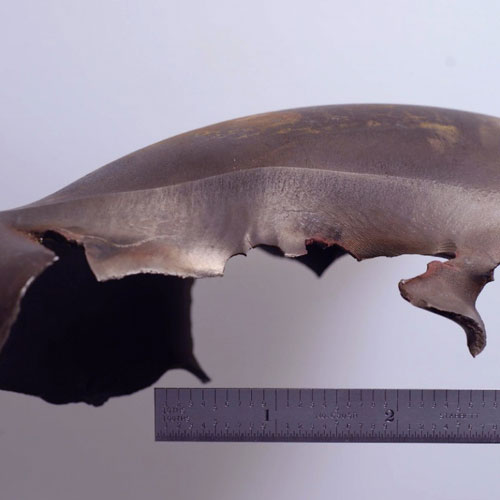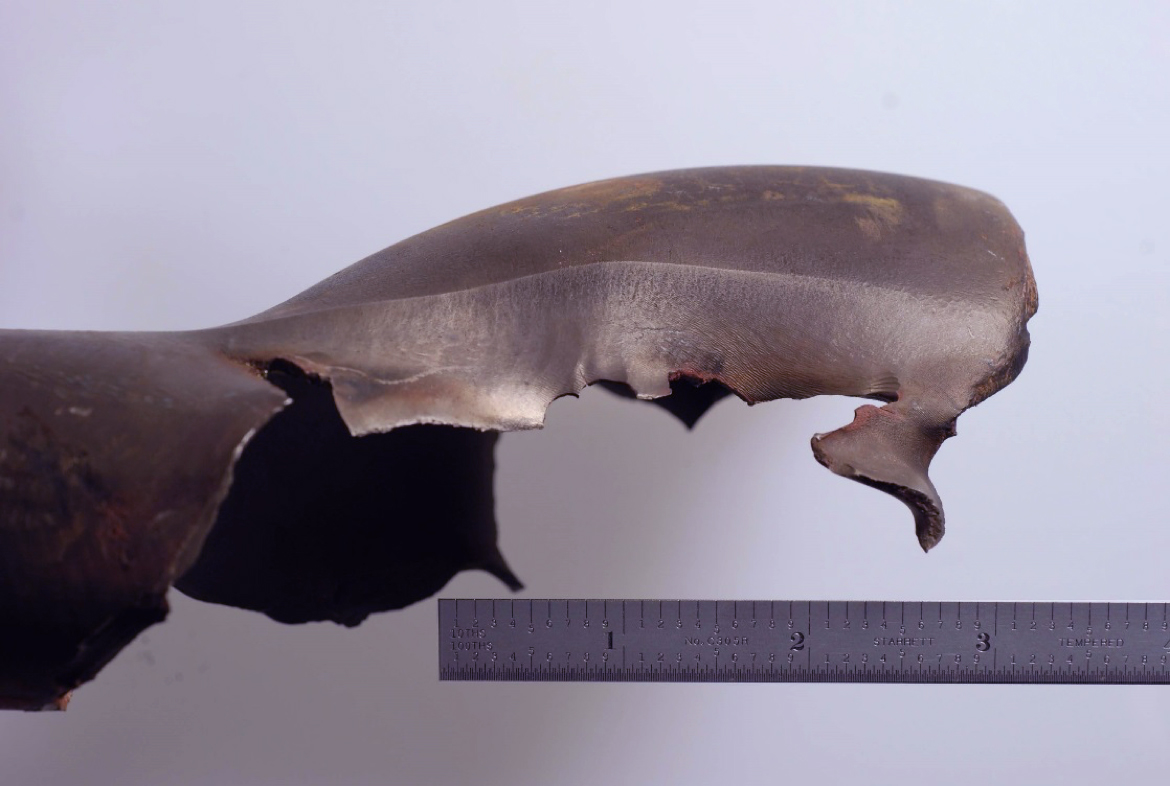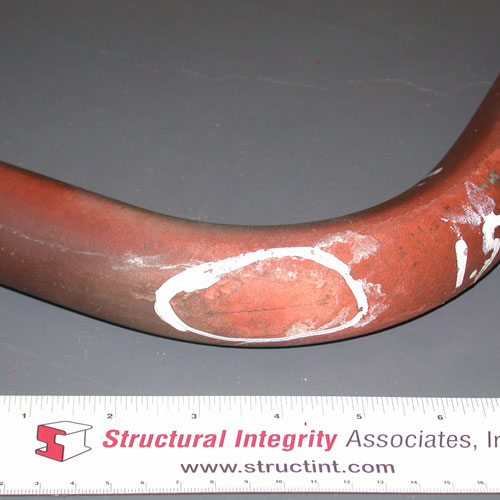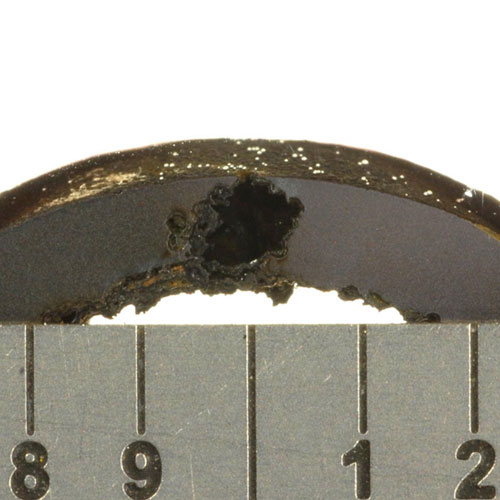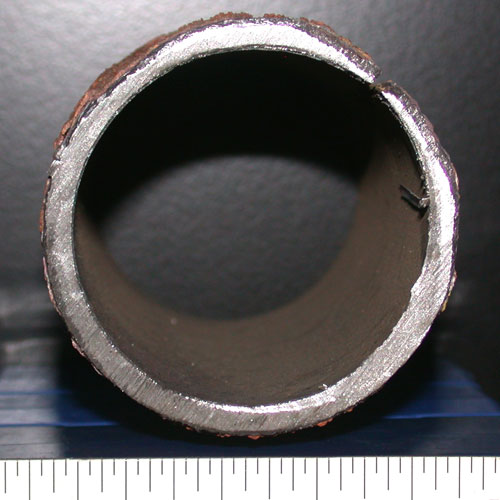Sootblower Erosion
Introduction
Soot blower erosion (SBE) of waterwall tubes is caused by mechanical removal of tube material due to the impingement on the tube wall of particles entrained in the “wet” blower steam. As the erosion becomes more severe, the tube wall thickness is reduced and eventually internal pressure causes the tube rupture.
Description
Mechanism
SBE is due to the loss of tube material caused by the impingement of ash particles entrained in the blowing steam on the tube OD surface. In addition to the direct loss of material by the mechanical erosion, SBE also removes the protective fireside oxide. (Where the erosion only affects the protective oxide layer on the fireside surface, the damage is more properly characterized as erosion-corrosion.) Due to the parabolic nature of the oxidation process, the fireside oxidation rate of the freshly exposed metal is increased. The rate of damage caused by the steam is related to the velocity and physical properties of the ash, the velocity of the particles and the approach or impact angle. While the damage sustained by the tube is a function of its resistance to erosion, its composition, and its operating temperature, the properties of the impinging particles are more influential in determining the rate of wall loss.
Typical Locations
Failures can occur anywhere where soot blowers are located. For waterwall tubes the damage will be located on the side of the tube facing the wall blower. Corner tubes and those near the lower slope may show damage over the entire circumference. Damage in superheater and reheater tubes usually occurs on the first tubes in from the wall entrance to the retractable blowers.
Features
- Severe OD wall loss
- Flat spots in areas of wall loss
- Lack of deposit/oxide in eroded areas
Root Causes
The primary cause for SBE has been linked to improper maintenance, including wet steam due to improper temperature settings or ineffective moisture traps as well as misaligned blowers. In addition, malfunctioning or “sticking” blowers, incorrectly set limit switches (particular to corner blowers), and improper head style can all contribute to SBE damage. Operational issues include excessive blower operation or blowing pressure, while an improperly located blower would be considered a design deficiency. The soot blower may operate automatically several times per shift, but if tubes do not have slag to blow off, the steam directly impinges onto the tubes.
Corrective Actions
Significant SBE can be identified with a visual inspection that detects flattened tube profiles or tubes exhibiting rust just after the unit comes down and is washed. While a misaligned wall tube may present signs of significant damage, other adjacent tubing may not. However, SBE damage is usually local to the wall blowers exhibiting some portion of a circular pattern. Performing ultrasonic thickness surveys around blowers will detect wall thinning not visually apparent and will provide data for determining the amount or rate of damage. This information is necessary to make run/replace decisions. When a tube fails due to soot blower erosion, other soot blowers in the system should be inspected to prevent failures and assist in the determination of the root cause.
To avoid repeat failures, the specific root cause must be mitigated and damaged tubing replaced. However, depending on the extent and severity of the damage, remedial actions may be necessary to continue operation. These would include: establishing the minimum wall thickness as a basis for deciding whether repair or replacement of the damaged tubing is appropriate, and determining whether a coating or tube shields should be installed to increase the useful life of the tube. Some of these measures should be considered temporary and may result in other unforeseen tube failure mechanisms, including copper embrittlement (specific to boilers with a copper based feed water cycle) or short term overheating due to excessive burn through and excessive penetration. All these are due to pad welding of excessively thinned tubes. Slightly thinned tubes should be left in the boiler to determine the erosion rate for future work.
SI Services
- Plant operational and maintenance reviews and benchmarking of damage severity. Reviews not directed toward specific concerns, such as short term overheating, can identify attributes which need improvement to avoid susceptibility to other forms of tube damage.
- Laboratory analysis of damaged tubing to assess condition and determine responsible failure mechanism.
- In situ NDE assessments to identify additional damaged tubing
- Provide guidance on repair procedures
Additional information
| Boiler Type | |
|---|---|
| Fuel | |
| Boiler Region | |
| Metallurgy | |
| Failure |

